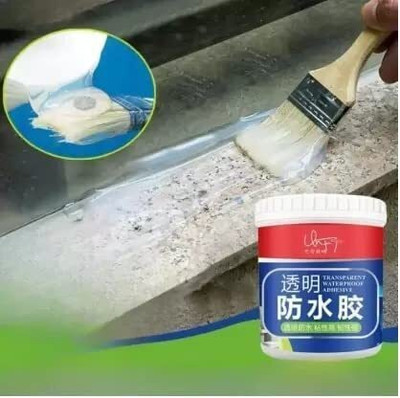PRIVINE Waterproof Adhesive Seal Crack For Surface Adhesive Transparent Crack Seal Agent Adhesive(300 g)
Quick Overview
Product Price Comparison
Function: This product can be directly painted on the wall/ceramic tile/stone/cement foundation, not peeling/powder, effectively prevent the substrate seepage, long service life.Safe operation, simple and convenient construction, cost-effective Product characteristics: waterproof, mould proof and antifouling Usage Method :- 1. Clean and dry the surface first 2. Use a brush to evenly apply it horizontally 3. Wait 12 hours for the second time of longitudinal painting 4. When the waterproof glue is dry, it can contact with water Precautions : 1. Avoid contact with children and contact with eyes. Rinse immediately with plenty of water and seek medical advice. 2. Store without direct sunlight and high temperature. 3. The waterproof glue must not be exposed to water before it is dry, otherwise it will turn white and fall off. 4. A thin layer should be applied each time, and it can be continued after drying. It should not be too thick, otherwise it is difficult to dry. Waterproofing is used in a variety of applications where water or moisture can cause damage to a structure or its contents. Here are some common uses of waterproofing 1) Building Foundations: Waterproofing is often used to protect building foundations from water damage. Water can seep through the foundation walls, causing damage to the structure, mold growth, and other issues. Waterproofing membranes and coatings can be used to create a barrier that prevents water from entering the foundation. 2) Basements: Basements are susceptible to water damage due to their location below ground level. 3) Roofs: Roofs are also susceptible to water damage. Waterproofing can be used to protect roofs from water damage caused by rain, snow, and ice. Waterproofing membranes and coatings can be used to create a barrier that prevents water from penetrating the roof. 4) Swimming Pools: Waterproofing is used in swimming pools to prevent leaks and to protect the structure from water damage 5) Bathrooms: Bathrooms are exposed to moisture and water on a regular basis, making them susceptible to water damage. Waterproofing can be used to protect bathroom walls and floors from water damage caused by showers, baths, and other sources of water.


